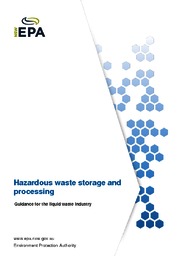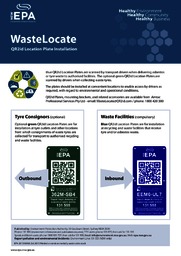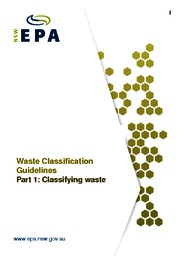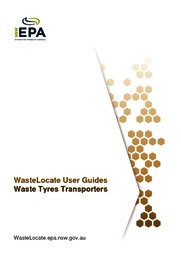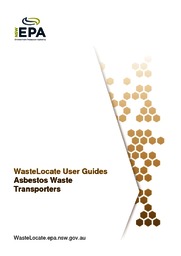Applications for a specific immobilisation approval can be made online through eConnect.
Follow this process to ensure we have all the necessary information to process your application, and don't have to contact you to supply more information.
- Demonstrate that it is not possible to reuse, recycle or reprocess the waste and that treatment to remove or destroy the contaminants is not feasible.
- Check that the waste, including the contaminants of concern, is not already covered by a general immobilisation approval. If the waste is not covered by a general immobilisation approval, but is similar to waste covered by a general immobilisation approval, contact the EPA as it may be possible to submit an abridged application based on the general immobilisation approval.
- Characterise the waste, including identifying the contaminants of concern and their variability. Test and assess the waste in accordance with the Waste Classification Guidelines to determine which contaminants ('the contaminants of concern') make the waste unsuitable for landfill disposal.
- Explain the scientific basis for claiming that the contaminants are immobilised.
- Demonstrate the means by which the contaminants of concern are immobilised:
- for natural immobilisation, identify the chemical compounds of the contaminants of concern present in the waste
- for chemical fixation, the chemical reactions which convert the contaminants of concern into an immobilised form
- for micro-encapsulation, identify the mechanism by which the contaminants of concern are micro-encapsulated
- for macro-encapsulation, describe the nature of the physical barrier to be established between the waste and the surrounding landfill environment
- Demonstrate that the means by which the contaminants are immobilised will be maintained over time in the landfill environment. To ensure the long-term stability of the waste it will, in many cases, be necessary to include additional disposal restrictions in the specific immobilisation approval.
- For chemical fixation or micro-encapsulation, confirm that any other substances present in the waste will not interfere with the chemical fixation or micro-encapsulation. Also confirm that any untreated reagent will not present an environmental problem.
- For macro-encapsulation, demonstrate that no other form of immobilisation is viable.
- Confirm, with TCLP results, that the contaminants of concern are immobilised in the waste to be landfilled (not necessary for macro-encapsulation). In some cases, MEP (multiple extraction procedure) results will also be required to demonstrate long-term stability in the landfill environment.
NOTE: TCLP results alone are not generally accepted as proof of immobilisation. the scientific basis for claiming immobilisation as outlined above must be included in an application for a specific immobilisation approval.
- Demonstrate the means by which the contaminants of concern are immobilised:
- Where the waste is not naturally immobilised or being macro-encapsulated, undertake treatment trials to determine the effectiveness of the proposed treatment. Attention should be paid to addressing scale-up issues between laboratory trials and the actual treatment. Laboratory trials, for example, often do not reproduce the conditions needed to achieve effective mixing during full-scale treatment. Refer to the EPA’s technical note on mixing for more information.
Start an application
Login to eConnect EPA if you are already registered. Otherwise, you need to register before you can start a new application. Note: the appearance of the login screen has changed.



